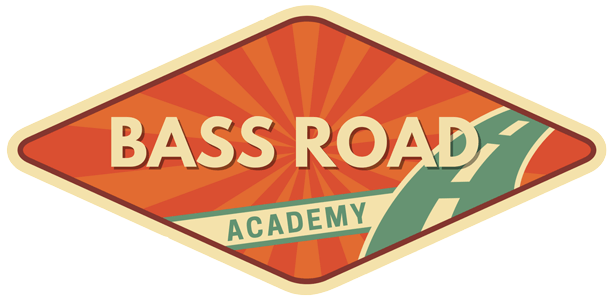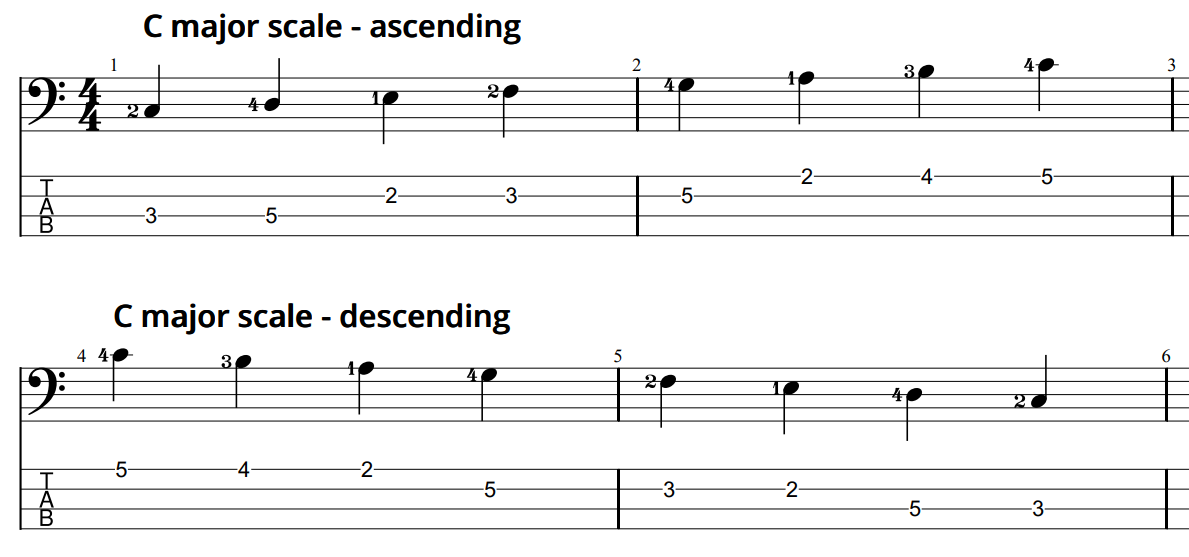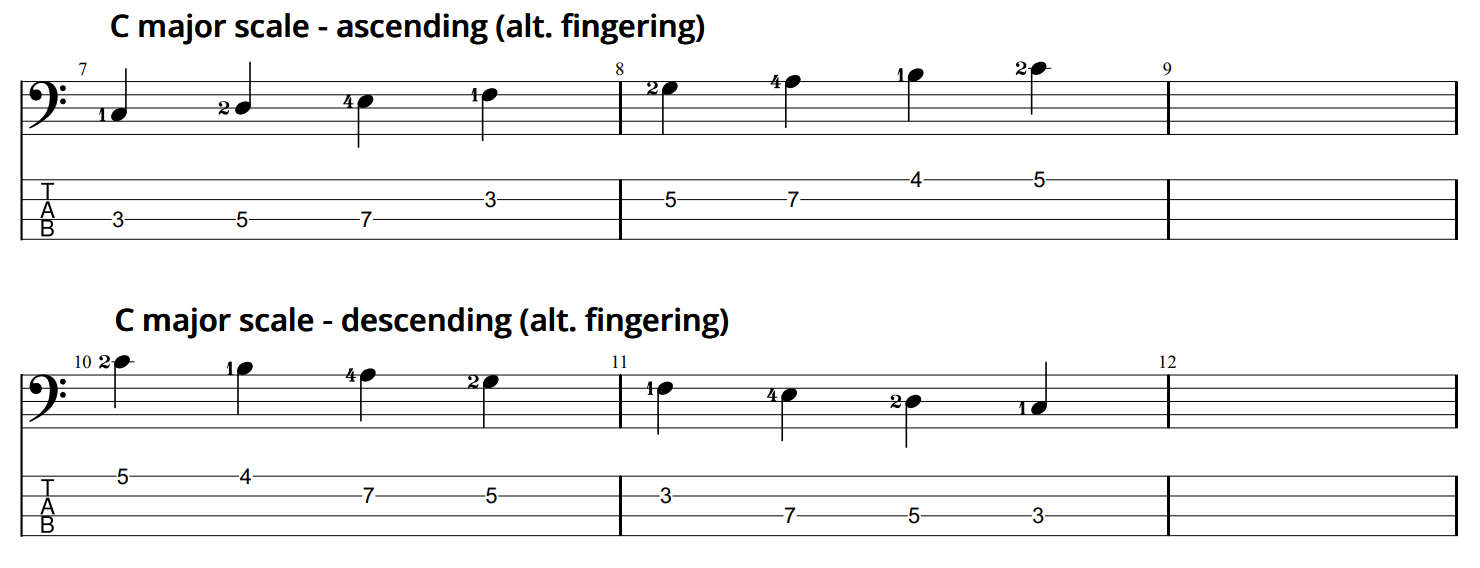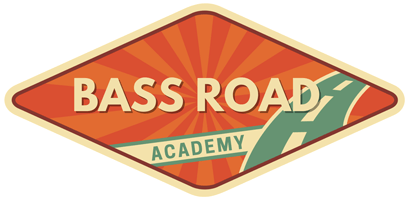In today’s lesson, you’re going to learn how to play the C major scale on bass.
This is definitely a first stop and scale every beginner bass player should learn.
Funny thing is, if you’re just starting on bass – you might not immediately see the benefit of this lesson but you must trust me on this one – you need to learn it!
This scale is the first step in understanding any of the theory topics you’ll be learning later on in your studies and it will open up a lot of doors for you.
What is the scale?
A scale is just a sequence of notes that convey a certain sound. Think of painter’s color pallet and just replace colors with notes.
That’s what the scale is, a pallet consisting of certain notes. Some scales sound happy when you play their notes, some scales sound sad.
The Major Scale
Here is the pattern for playing the C major scale on bass:
Here is another pattern for the C major scale, using different fingering:
What you need to take from this is the shape of the scale.
You just need to move the root note, to start playing the pattern on another note in order to play the scale in a different key.
For example, this is the D major scale:
…and here we have G major scale:

Did you get it?
The shape of the scale and distances between the notes in the scale always stays the same. You just start it on a different note to play the scale in another key.
If you want to get extra nerdy about this, the formula for constructing major scale is:
W W H W W W H
W– whole step
H – half step
In the case of C major scale we get:
1----2----3----4----5----6----7----1 - degrees W W H W W W H - intervals formula C----D----E----F----G----A----B----C - scale notes
Task: construct the major scale in different keys – F major, G major, E major etc. First, play the scale on bass and then write down the notes on paper using the formula above to see if you got it right.
C major Scale Song
Last but not least – let’s put this scale into use right away.
I have composed a mini song for you so that you don’t have to practice your scale with the boring-sounding metronome.
Use any of the suggested fingerings found in the tabs above to play along the backing track.
C Major Scale Song - Full Band
C Major Scale Song - Backing Track
Lesson Resources
C Major Scale Tab PDF
C Major Scale Song Backing Track 85 BPM
Recording task: once you have learned the lesson, record a video of your performance and share it in our Facebook group.




